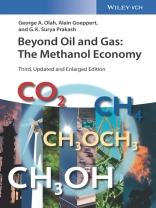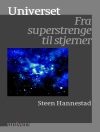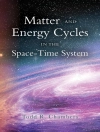Completely revised and updated, the third edition of this bestseller discusses the concept and ongoing development of using methanol and derived dimethyl ether as a transportation fuel, energy storage medium, and as a chemical raw material to replace fossil fuels.
The contents have been expanded by 35% with new and up to date coverage on energy storage, methanol from biomass and waste products, as well as on carbon dioxide capture and recycling. Written by the late Nobel laureate George Olah, Alain Goeppert and G. K. Surya Prakash, this is an inspiring read for anyone concerned with the major challenge posed by environmental problems including global warming and ocean acidification due to massive increase in fossil fuel use. The book provides a comprehensive and sustainable solution to replace fossil fuels in the long run by chemical recycling of carbon dioxide through renewable methanol utilizing alternative energy sources such as solar, wind, hydro, geothermal and nuclear. The Methanol Economy is being progressively implemented in many parts of the world.
Tabla de materias
Preface xiii
About the Authors xv
Acronyms xvii
1 Introduction 1
2 Coal in the Industrial Revolution and Beyond 13
3 History of Petroleum Oil and Natural Gas 21
3.1 Oil Extraction and Exploration 26
3.2 Natural Gas 27
4 Fossil‐Fuel Resources and Their Use 31
4.1 Coal 32
4.2 Petroleum Oil 38
4.3 Unconventional Oil Sources 43
4.4 Tar Sands 44
4.5 Oil Shale 46
4.6 Light Tight Oil 47
4.7 Natural Gas 48
4.8 Coalbed Methane 56
4.9 Tight Sands and Shales 56
4.10 Methane Hydrates 57
4.11 Outlook 60
5 Oil and Natural Gas Reserves and Their Limits 63
6 The Continuing Need for Hydrocarbon Fuels and Products 73
6.1 Fractional Distillation of Oil 77
6.2 Thermal Cracking and Other Downstream Processes 78
6.3 Petroleum Products 79
7 Fossil Fuels and Climate Change 85
7.1 Mitigation 95
8 Renewable Energy Sources and Atomic Energy 101
8.1 Hydropower 104
8.2 Geothermal Energy 108
8.3 Wind Energy 113
8.4 Solar Energy: Photovoltaic and Thermal 117
8.4.1 Electricity from Photovoltaic Conversion 118
8.4.2 Solar Thermal Power for Electricity Production 121
8.4.3 Electric Power from Saline Solar Ponds 125
8.4.4 Solar Thermal Energy for Heating 125
8.4.5 Economics of Solar Energy 126
8.5 Bioenergy 127
8.5.1 Electricity from Biomass 128
8.5.2 Liquid Biofuels 130
8.5.2.1 Biomethanol 135
8.5.3 Advantages and Limitation of Biofuels 135
8.6 Ocean Energy: Thermal, Tidal, and Wave Power 136
8.6.1 Tidal Energy 136
8.6.2 Wave Power 138
8.6.3 Ocean Thermal Energy 139
8.7 Nuclear Energy 140
8.7.1 Energy from Nuclear Fission Reactions 142
8.7.2 Breeder Reactors 146
8.7.3 The Need for Nuclear Power 148
8.7.4 Economics 149
8.7.5 Safety 151
8.7.6 Radiation Hazards 153
8.7.7 Nuclear By‐products, Waste, and Their Management 154
8.7.8 Emissions 156
8.7.9 Nuclear Fusion 156
8.7.10 Nuclear Power: An Energy Source for the Future 160
8.8 Future Outlook 161
9 The Hydrogen Economy and Its Limitations 165
9.1 Hydrogen and Its Properties 166
9.2 The Development of Hydrogen Energy 168
9.3 Production and Uses of Hydrogen 171
9.3.1 Hydrogen from Fossil Fuels 172
9.3.2 Hydrogen from Biomass 174
9.3.3 Photobiological Water Cleavage and Fermentation 175
9.3.4 Water Electrolysis 175
9.3.4.1 Electrolyzer Types 176
9.3.4.2 Electricity Source 177
9.3.5 Hydrogen Production Using Nuclear Energy 179
9.4 The Challenge of Hydrogen Storage 180
9.4.1 Liquid Hydrogen 182
9.4.2 Compressed Hydrogen 182
9.4.3 Metal Hydrides and Solid Adsorbents 184
9.4.4 Chemical Hydrogen Storage 185
9.5 Centralized or Decentralized Distribution of Hydrogen? 186
9.6 Hydrogen Safety 188
9.7 Hydrogen as a Transportation Fuel 189
9.8 Fuel Cells 191
9.8.1 History 191
9.8.2 Fuel Cell Efficiency 192
9.8.3 Hydrogen‐based Fuel Cells 194
9.8.4 PEM Fuel Cells for Transportation 197
9.8.5 Regenerative Fuel Cells 200
9.9 Outlook 203
10 The “Methanol Economy”: General Aspects 205
11 Methanol and Dimethyl Ether as Fuels and Energy Carriers 211
11.1 Background and Properties of Methanol 211
11.1.1 Methanol in Nature 213
11.1.2 Methanol in Space 213
11.2 Chemical Uses of Methanol 214
11.3 Methanol as a Transportation Fuel 216
11.3.1 Development of Alcohols as Transportation Fuels 217
11.3.2 Methanol as a Fuel in Spark Ignition (SI) Engines 226
11.3.3 Methanol as a Fuel in Compression Ignition (Diesel) Engines and Methanol Engines 229
11.4 Dimethyl Ether as a Transportation Fuel 232
11.5 Biodiesel Fuel 238
11.6 Advanced Methanol‐powered Vehicles 238
11.6.1 Hydrogen for Fuel Cells Based on Methanol Reforming 239
11.7 Direct Methanol Fuel Cell (DMFC) 245
11.8 Fuel Cells Based on Other Methanol‐derived Fuels and Biofuel Cells 253
11.8.1 Regenerative Fuel Cell 253
11.9 Methanol and DME as Marine Fuels 253
11.10 Methanol for Locomotives and Heavy Equipment 261
11.11 Methanol as an Aviation Fuel 262
11.12 Methanol for Static Power, Heat Generation, and Cooking 263
11.13 DME for Electricity Generation and as a Household Gas 265
11.14 Methanol and DME Storage and Distribution 268
11.15 Price of Methanol and DME 271
11.16 Safety of Methanol and DME 273
11.17 Emissions from Methanol‐ and DME‐powered Vehicles and Other Sources 278
11.18 Environmental Effects of Methanol and DME 283
11.19 The Beneficial Effect of Chemical CO2 Recycling to Methanol on Climate Change 285
12 Production of Methanol from Still Available Fossil‐Fuel Resources 287
12.1 Methanol from Fossil Fuels 290
12.1.1 Production via Syngas 290
12.1.2 Syngas from Coal 294
12.1.3 Syngas from Natural Gas 295
12.1.3.1 Steam Reforming of Methane 295
12.1.3.2 Partial Oxidation of Methane 296
12.1.3.3 Autothermal Reforming and Combination of Steam Reforming with Partial Oxidation 296
12.1.3.4 Syngas from CO2 Reforming of Methane 297
12.1.4 Syngas from Petroleum Oil and Higher Hydrocarbons 297
12.1.5 Economics of Syngas Generation 298
12.1.6 Alternative Syngas Generation Methods 298
12.1.6.1 Tri‐reforming of Natural Gas 298
12.1.6.2 Bi‐reforming of Methane for Methanol Production 298
12.1.6.3 Oxidative Bi‐reforming of Methane for Methanol Production: Methane Oxygenation 300
12.1.7 Other High‐Temperature Processes Based on Methane to Convert Carbon Dioxide to Methanol 300
12.1.7.1 Carnol Process 300
12.1.7.2 Combination of Methane Decomposition with Dry Reforming or Steam Reforming 302
12.1.7.3 Addition of CO2 to Syngas from Methane Steam Reforming 303
12.1.8 Coal to Methanol Without CO2 Emissions 303
12.1.9 Methanol from Syngas Through Methyl Formate 305
12.1.10 Methanol from Methane Without Producing Syngas 306
12.1.10.1 Direct Oxidation of Methane to Methanol 306
12.1.10.2 Catalytic Gas‐Phase Oxidation of Methane 307
12.1.10.3 Liquid‐Phase Oxidation of Methane to Methanol 309
12.1.10.4 Methane to Methanol Conversion Through Monohalogenated Methanes 311
12.1.11 Microbial or Photochemical Conversion of Methane to Methanol 313
12.2 Dimethyl Ether Production from Syngas or Carbon Dioxide Using Fossil Fuels 314
13 Production of Renewable Methanol and DME from Biomass and Through Carbon Capture and Recycling 319
13.1 Biomass‐ and Waste‐Based Methanol and DME – Biomethanol and Bio‐DME 319
13.1.1 Gasification 321
13.1.1.1 Sources of Heat for the Gasification 322
13.1.2 Biocrude 322
13.1.3 Combination of Biomass and Coal 324
13.1.4 Excess CO2 in the Gas Mixture Derived from Biomass 324
13.1.5 Methanol from Biogas 329
13.1.6 Limitations of Biomass 332
13.1.7 Aquaculture 335
13.1.7.1 Water Plants 336
13.1.7.2 Algae 336
13.2 Chemical Recycling of Carbon Dioxide to Methanol 340
13.3 Heterogeneous Catalysts for the Production of Methanol from CO2 and H2 340
13.4 Production of DME from CO2 Hydrogenation over Heterogeneous Catalysts 342
13.5 Reduction of CO2 to Methanol with Homogeneous Catalysts 343
13.6 Practical Applications of CO2 to Methanol 344
13.7 Alternative Two‐Step Route for CO2 Hydrogenation to Methanol 346
13.8 Where Should the Needed Hydrogen Come From? 346
13.9 CO2 Reduction to CO Followed by Hydrogenation 347
13.10 Electrochemical Reduction of CO2 348
13.10.1 Direct Electrochemical CO2 Reduction to Methanol 349
13.10.2 Methods for High‐Rate Electrochemical CO2 Reduction 350
13.10.3 Syngas (Metgas) Production from Formic Acid Synthesized by Electrochemical Reduction of CO2 352
13.11 Thermochemical and Photochemical Routes to Methanol 352
13.11.1 Solar‐Driven Thermochemical Conversion of CO2 to CO for Methanol Synthesis 352
13.11.2 Direct Photochemical Reduction of CO2 to Methanol 354
13.12 Sources of CO2 355
13.12.1 Separating Carbon Dioxide from Industrial and Natural Sources for Chemical Recycling 356
13.12.2 CO2 Capture from Seawater 359
13.12.3 CO2 Capture from the Air 359
13.13 Atmospheric CO2 to Methanol 363
13.14 Cost of Producing Methanol from CO2 and Biomass 365
13.15 Advantages of Producing Methanol from CO2 and H2 369
13.16 Reduction in Greenhouse Gas Emissions 369
13.17 Anthropogenic Carbon Cycle 372
14 Methanol‐Based Chemicals, Synthetic Hydrocarbons, and Materials 375
14.1 Methanol‐Based Chemical Products and Materials 375
14.2 Methyl‐tert‐butyl Ether and DME 377
14.3 Methanol Conversion to Light Olefins and Synthetic Hydrocarbons 378
14.4 Methanol to Olefin (MTO) Processes 380
14.5 Methanol to Gasoline (MTG) Processes 383
14.6 Methanol‐Based Proteins 384
14.7 Plant Growth Promotion 385
14.8 Outlook 386
15 Conclusion and Outlook 387
15.1 Where Do We Stand? 387
15.2 The “Methanol Economy”: Progress and Solutions for the Future 390
Further Reading and Information 395
References 409
Index 459
Sobre el autor
George A. Olah obtained his doctorate at the Technical University of Budapest in 1949 and was the Donald P. and Katherine B. Loker Distinguished Professor of Organic Chemistry and Director of the Loker Hydrocarbon Institute at the University of Southern California, USA. He passed away on March 8, 2017. Olah received numerous awards and recognitions worldwide, including memberships in various academies of science and 12 honorary degrees. He had some 1, 400 scientific papers, 20 books and more than 140 patents to his name. Professor Olah’s research spanned a wide range of synthetic and mechanistic organic chemistry. But most notably, his work on the chemistry of carbocations earned him the 1994 Nobel Prize in Chemistry.
Alain Goeppert is a research associate in the groups of Profs. George A. Olah and G. K. Surya Prakash at the Loker Hydrocarbon Research Institute at the University of Southern California, USA, since 2002. After obtaining his diploma in chemistry from the University Robert Schuman in Strasbourg, France, he received his engineering degree from the Fachhochschule Aalen, Germany. He then returned to Strasbourg to obtain his Ph D in 2002 under the direction of Prof. Jean Sommer at the Universite Louis Pasteur. Dr. Goeppert’s current research is focused on the transformation of methane and CO2 into more valuable products and CO2 capture technologies.
G. K. Surya Prakash is currently a Professor and Olah Nobel Laureate Chair in Hydrocarbon Chemistry and Scientific Co-Director at the Loker Hydrocarbon Research Institute at University of Southern California, USA. After gaining his bachelor and master degrees from India, he obtained his Ph D from the University of Southern California under the direction of Prof. Olah in 1978. Professor Prakash has close to 600 scientific papers, 9 books and 25 patents to his name, and has received many accolades, including two American Chemical Society National Awards. His primary research interests are in superacid, hydrocarbon, synthetic organic & organofluorine chemistry, energy and catalysis areas.












